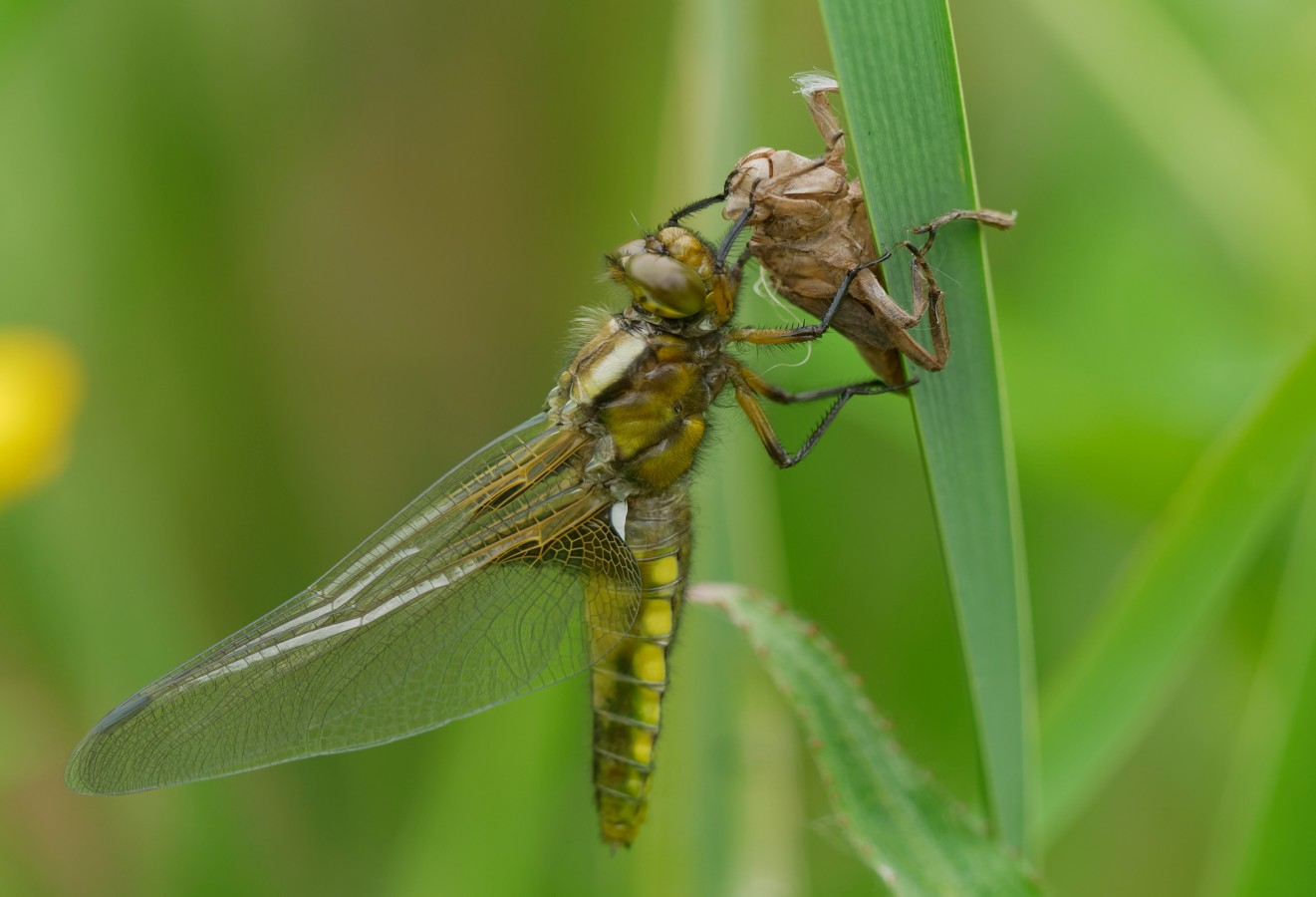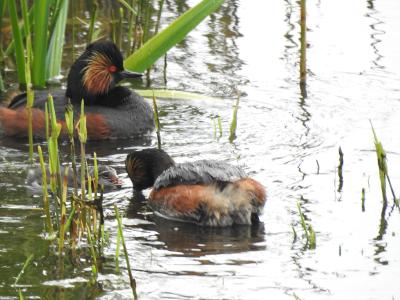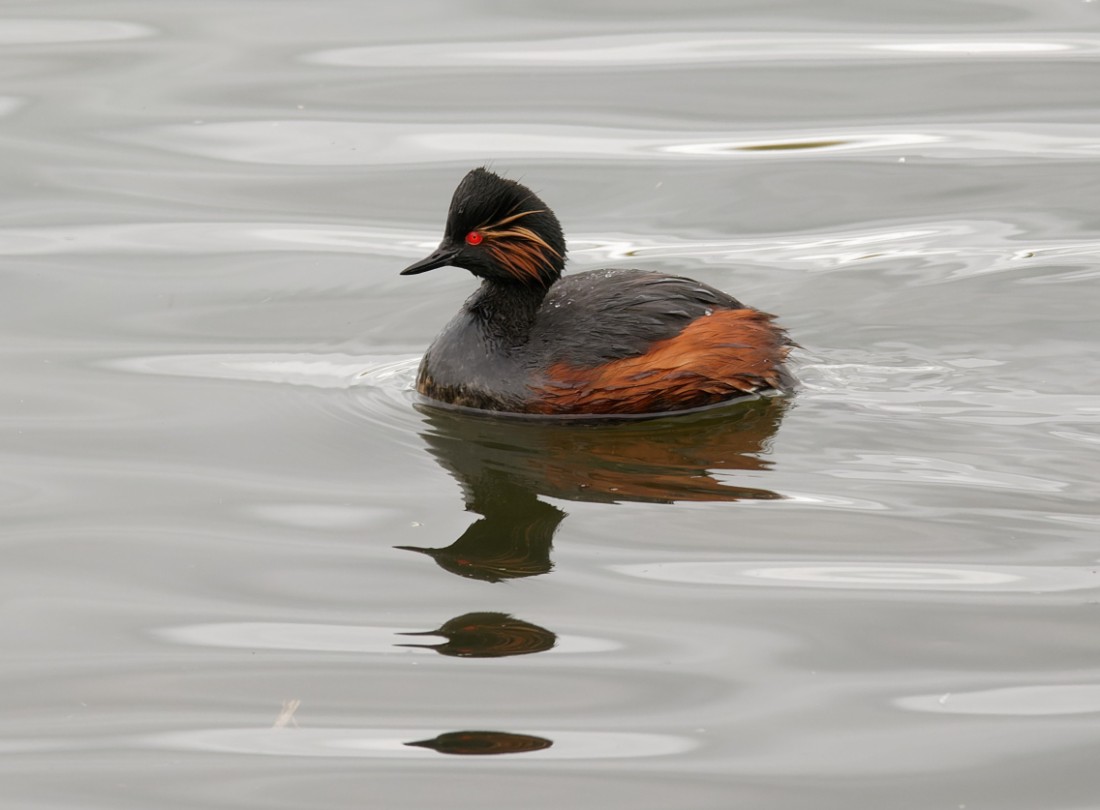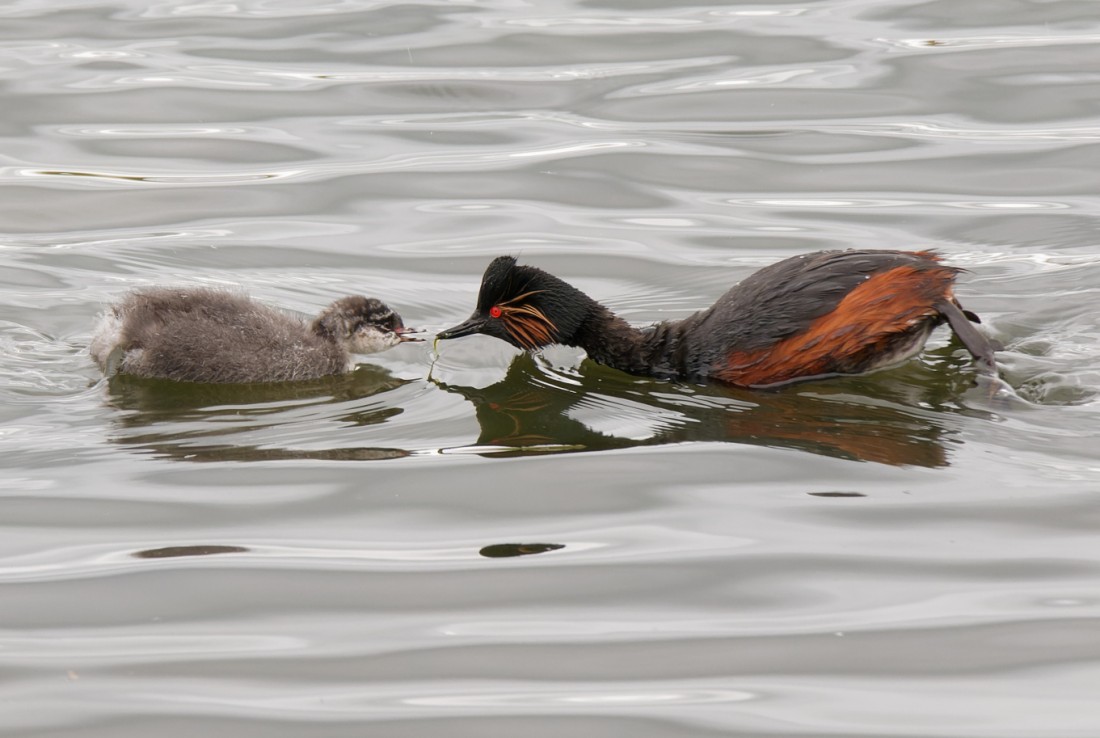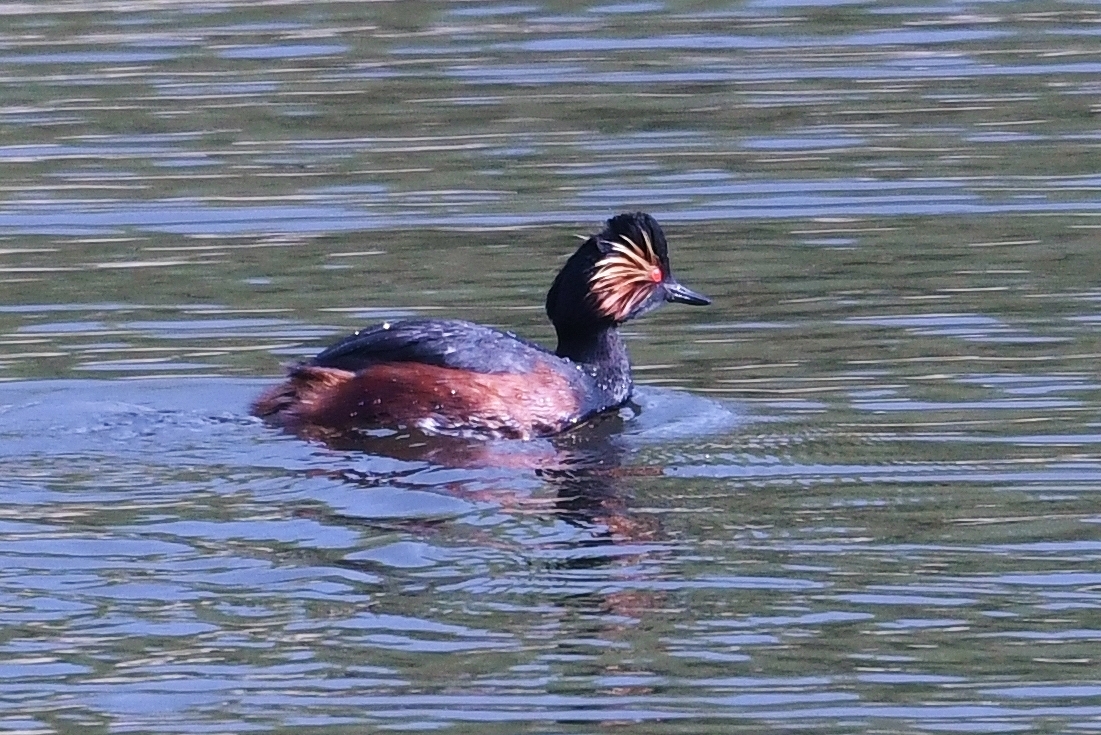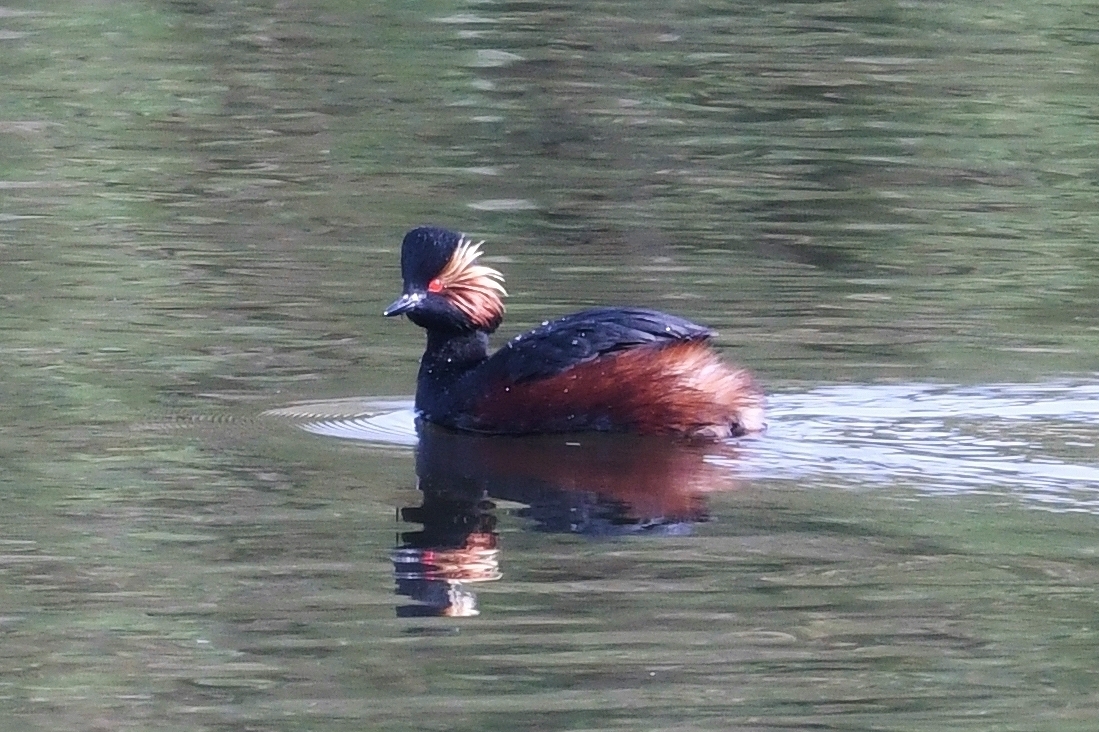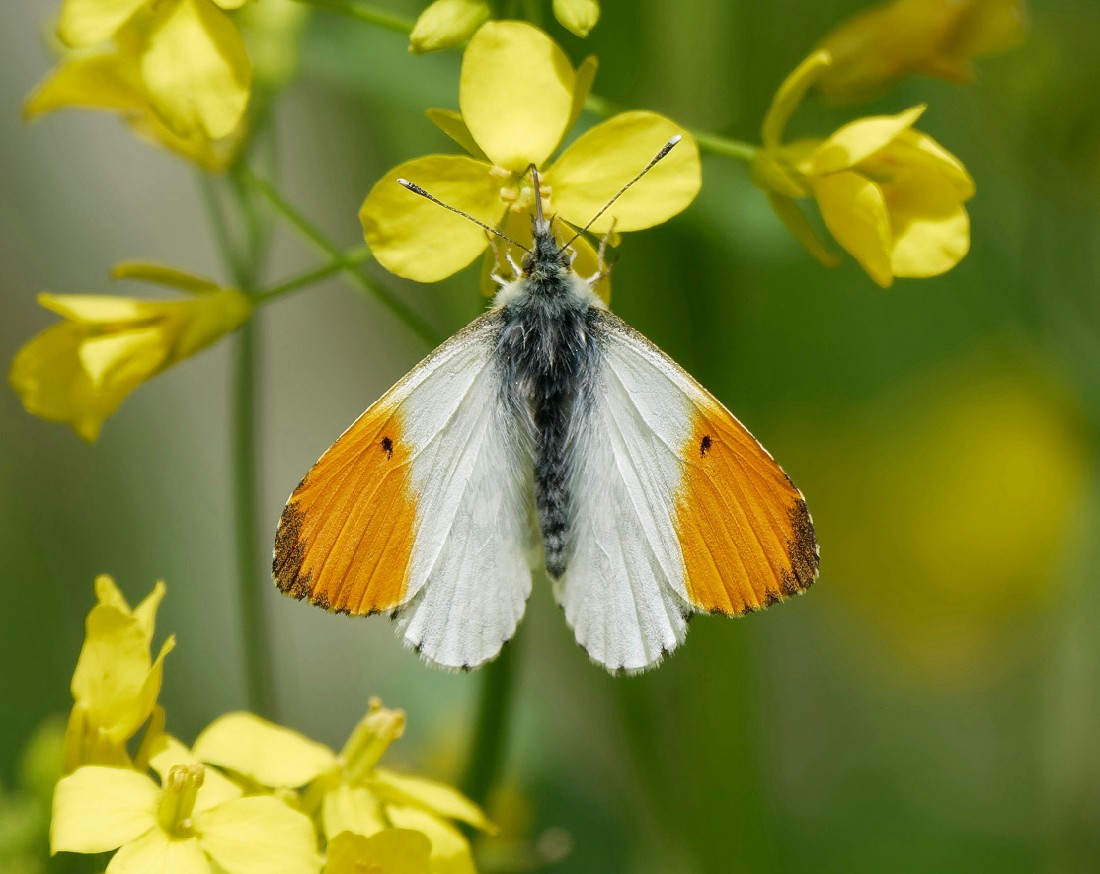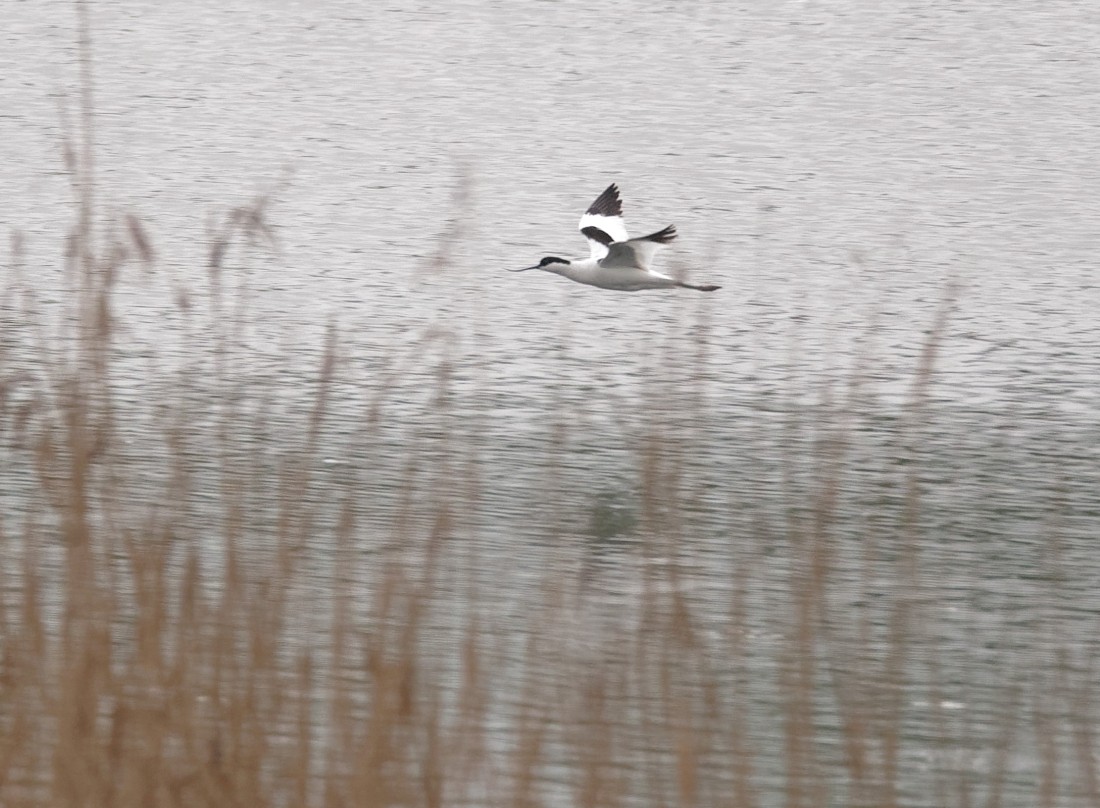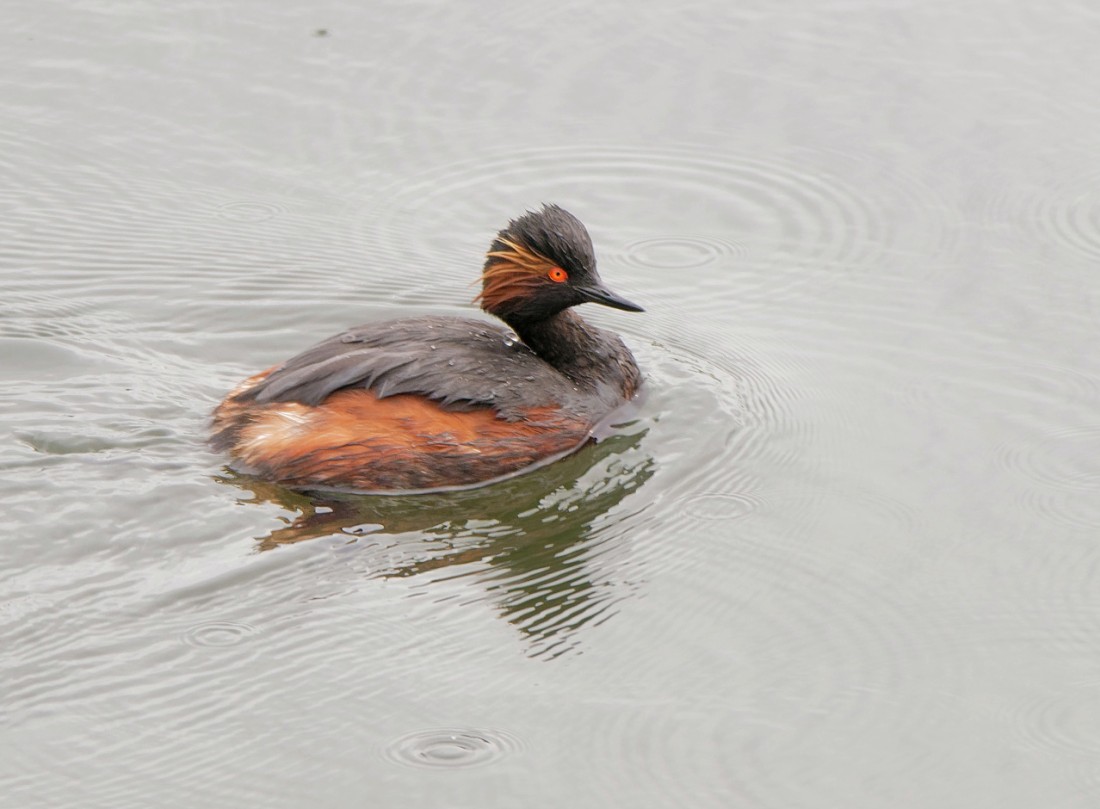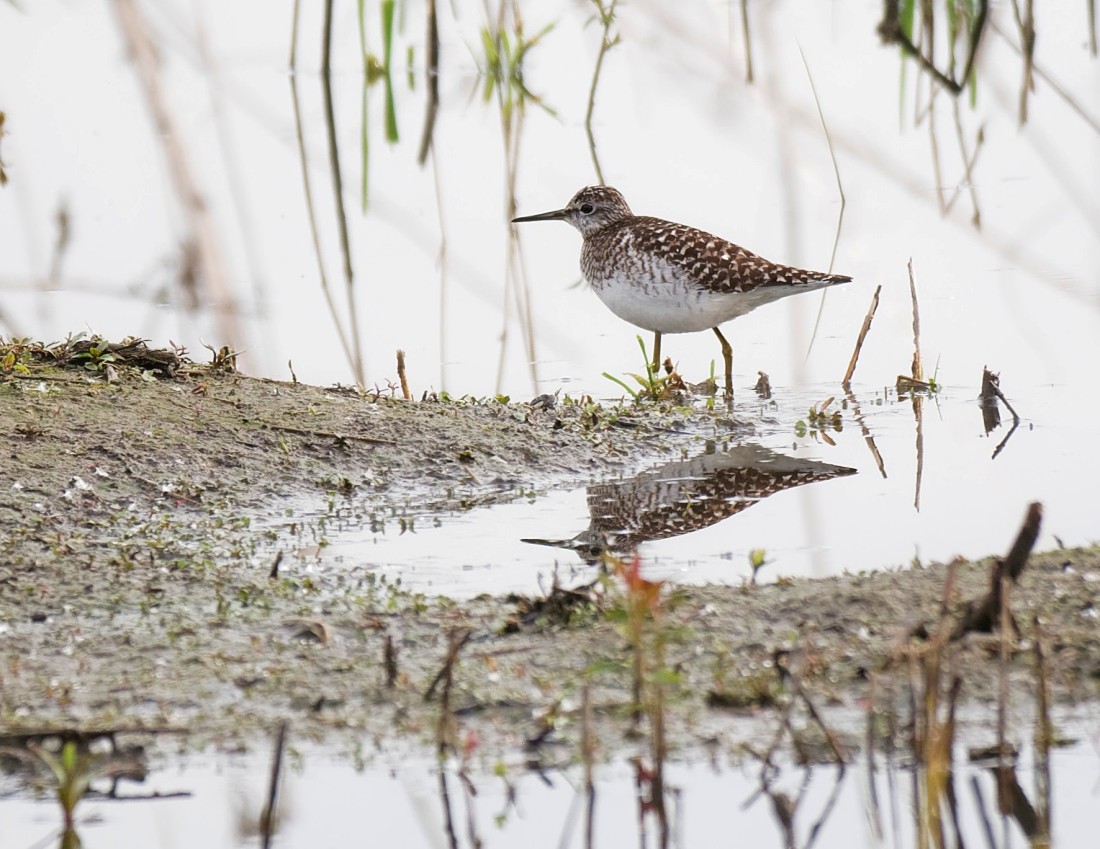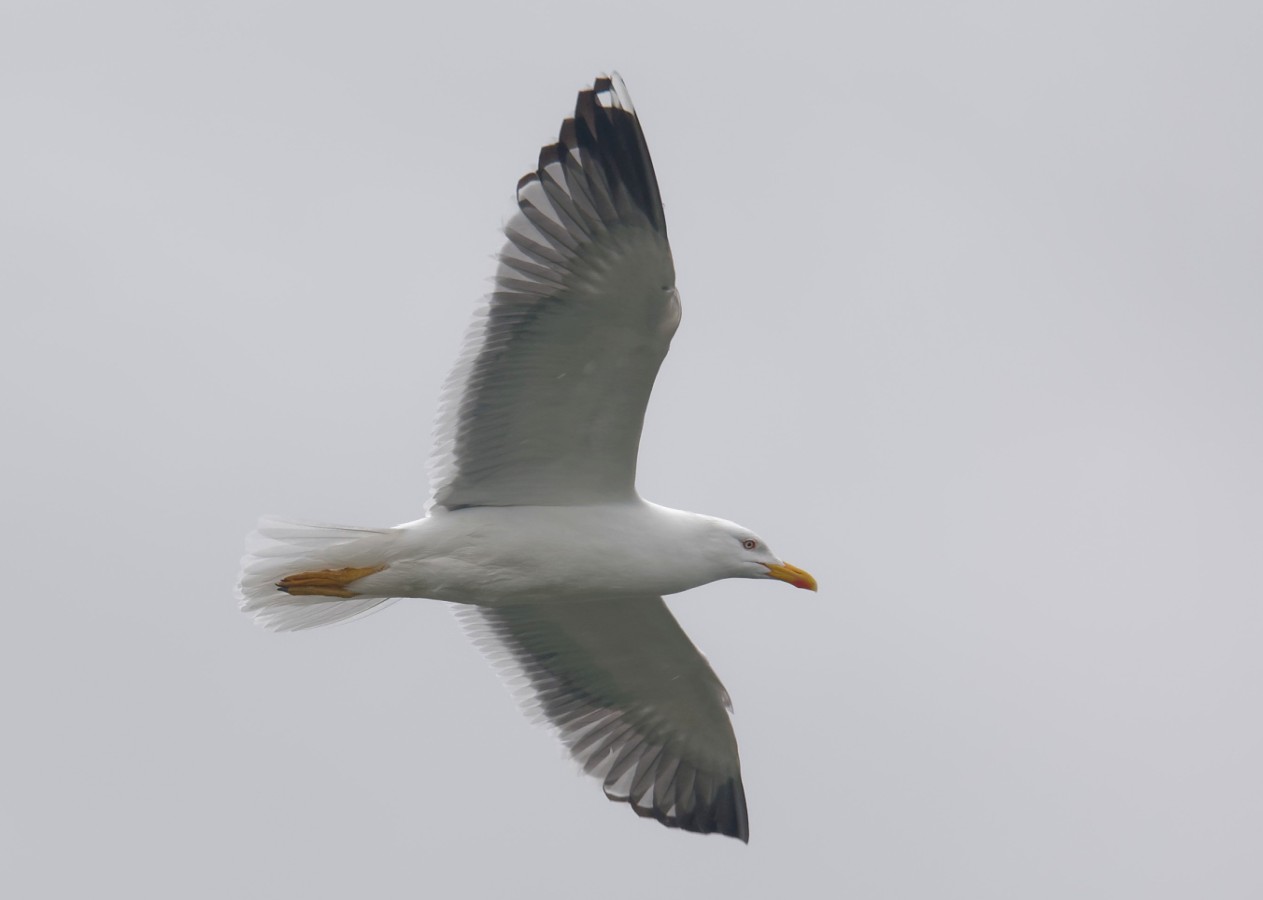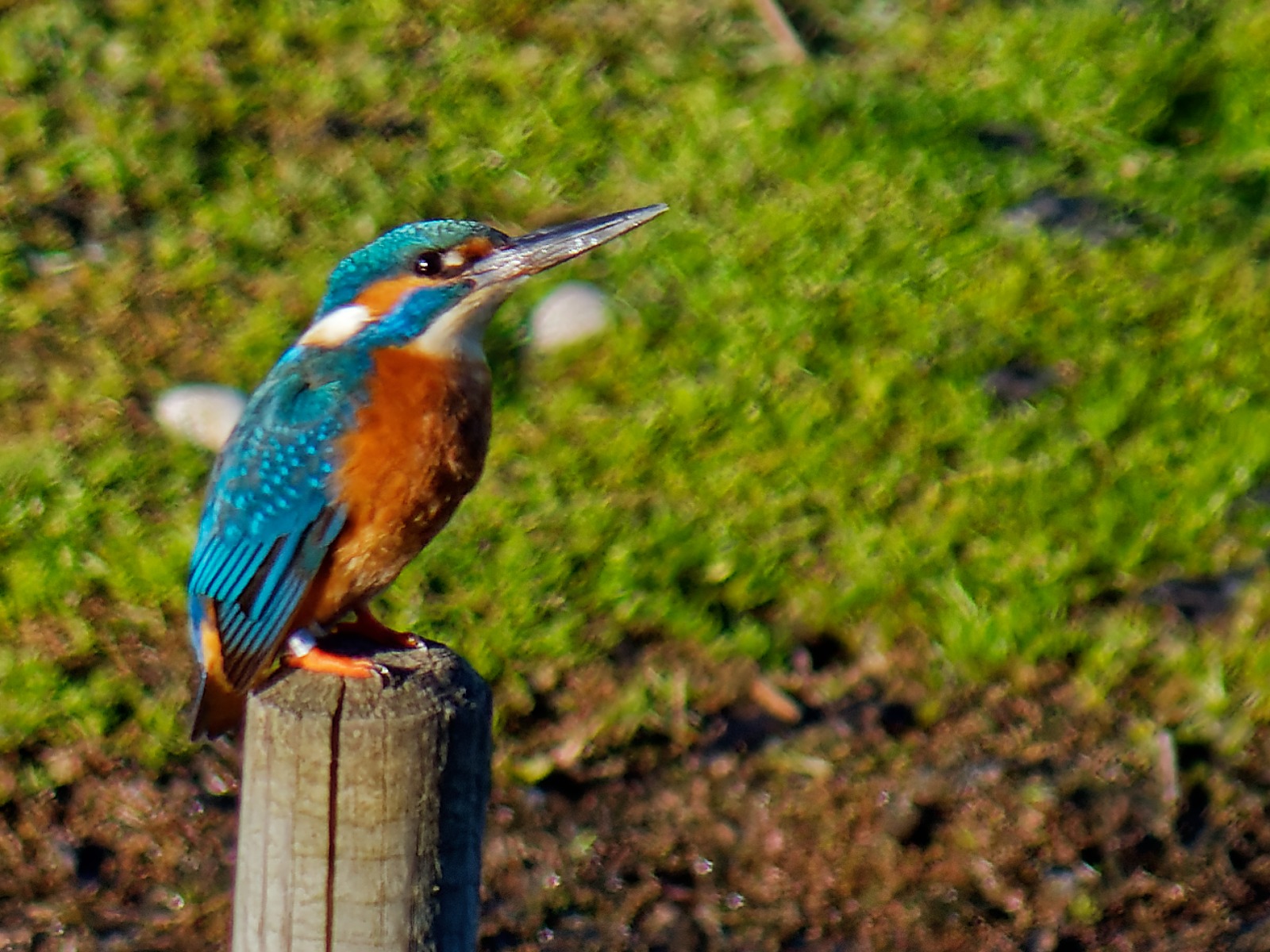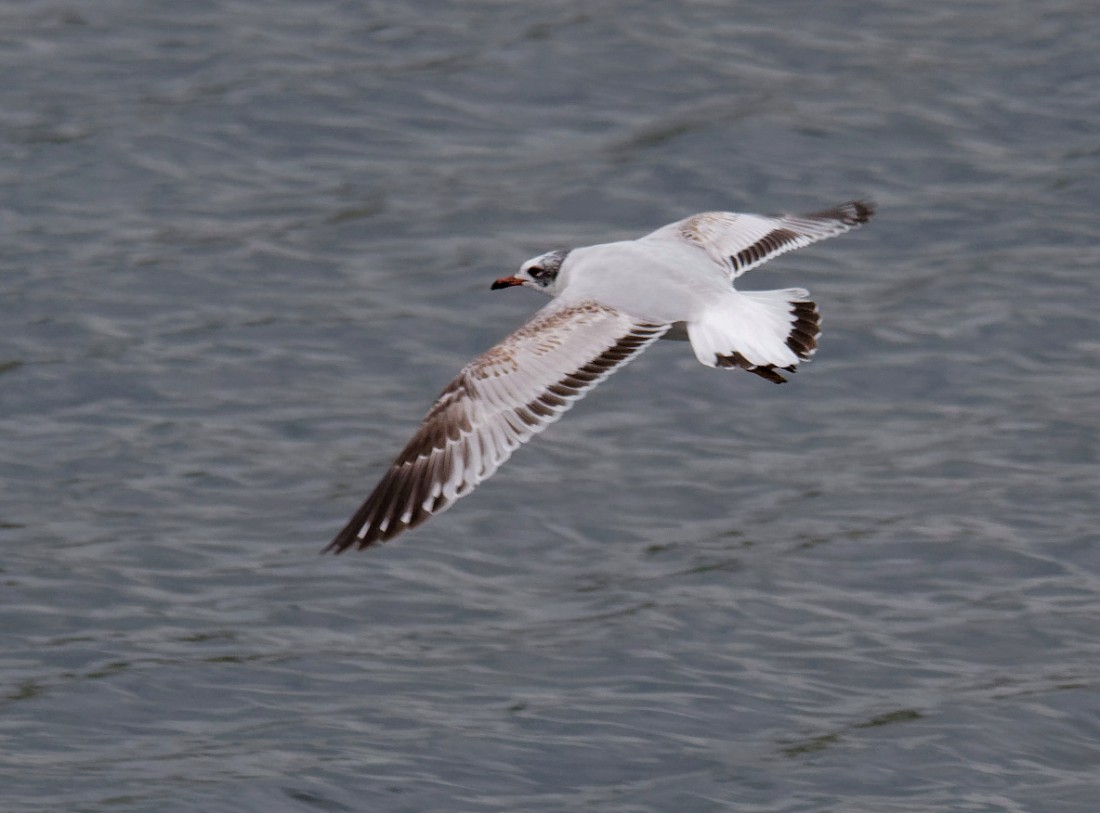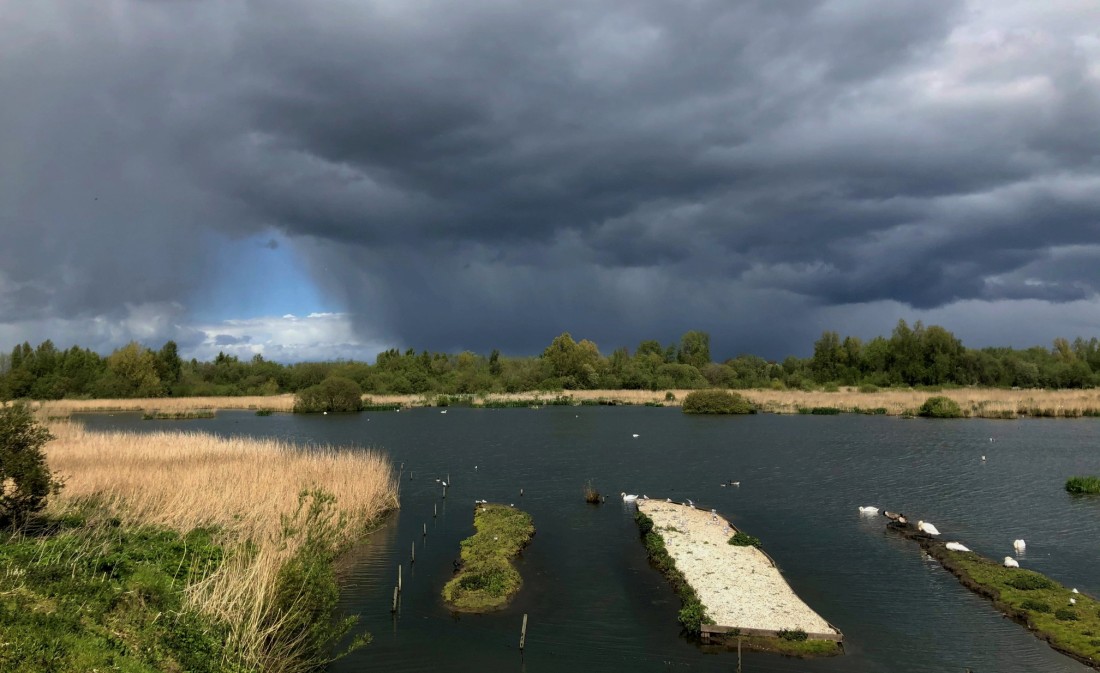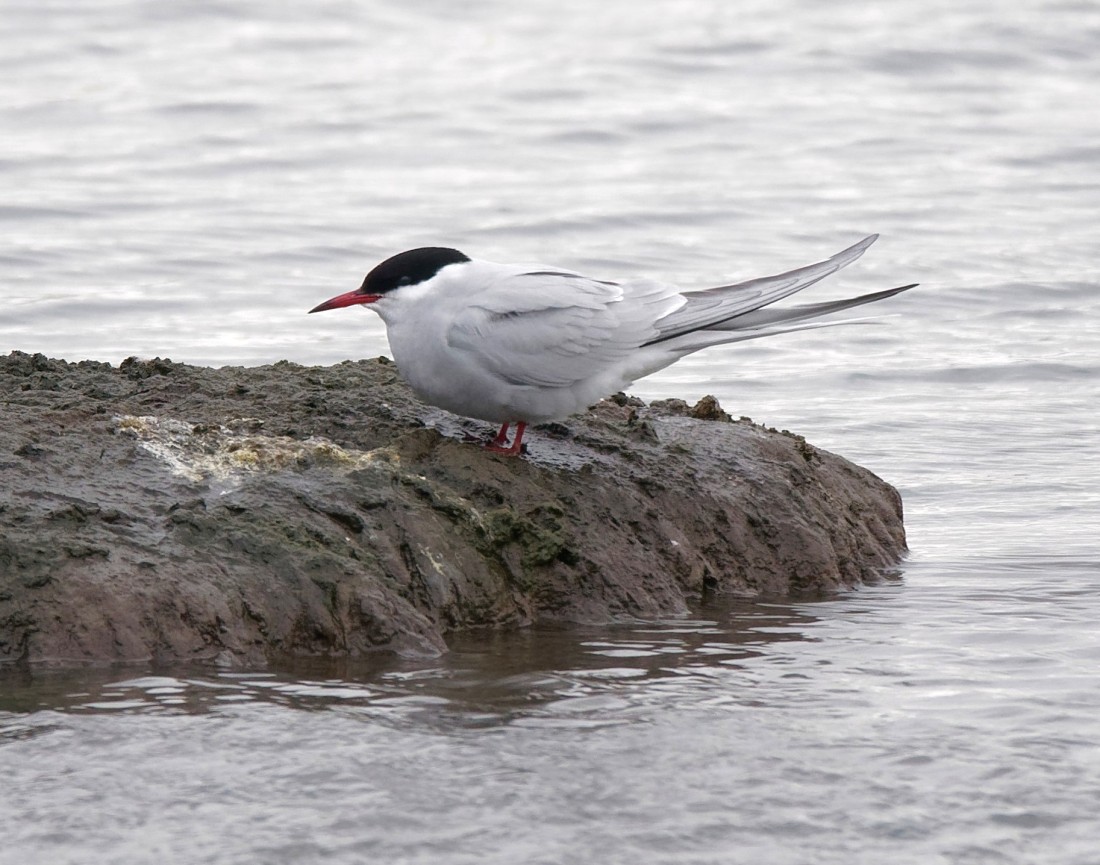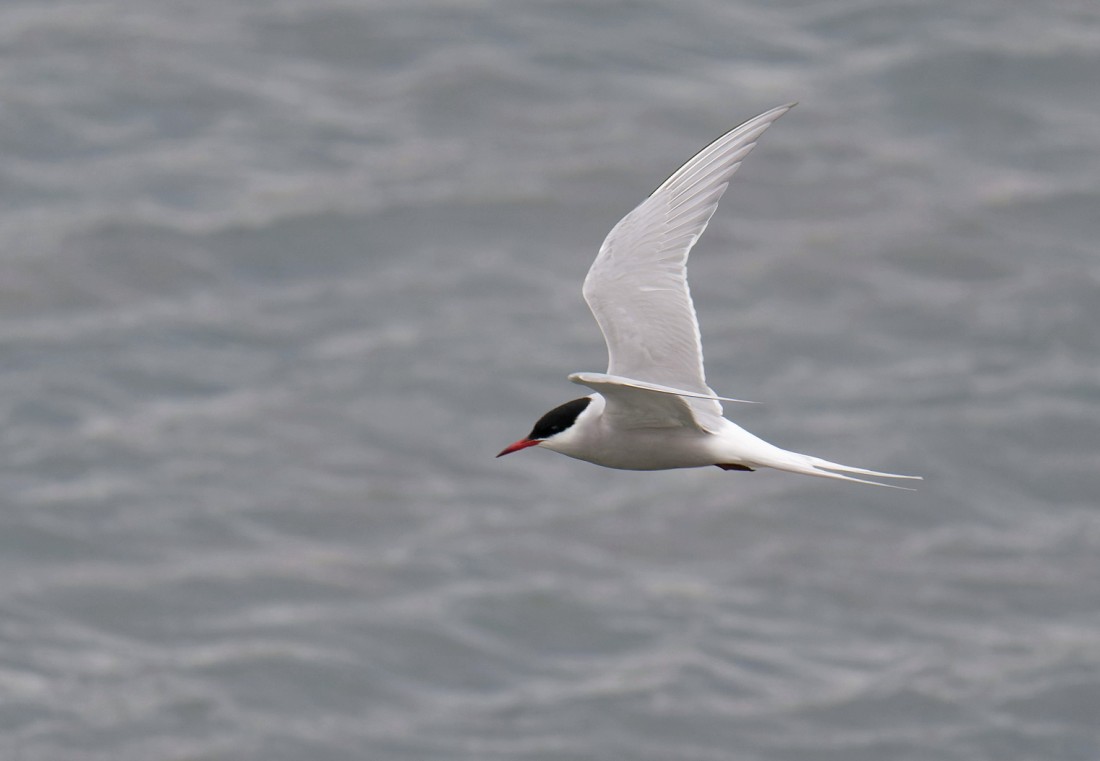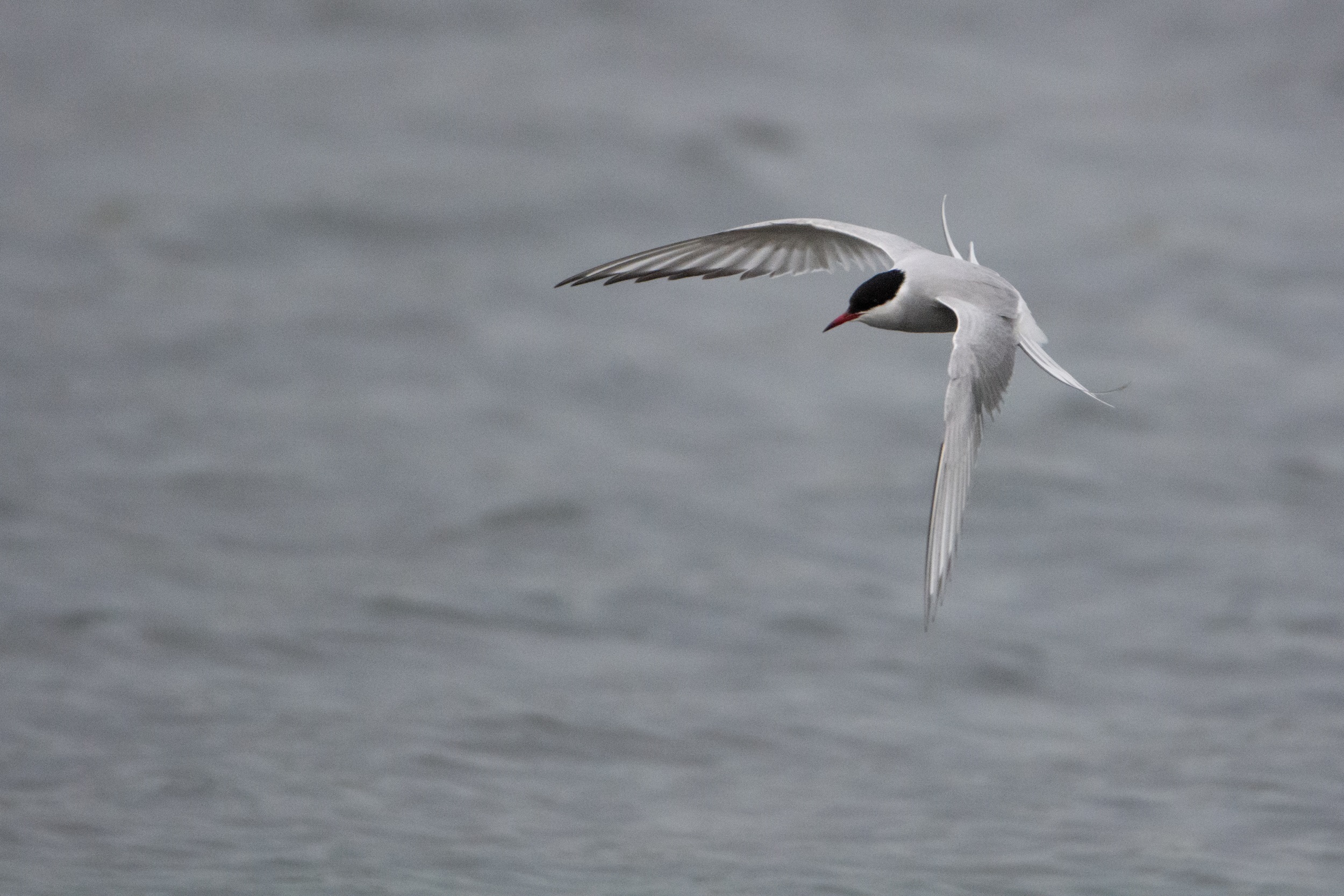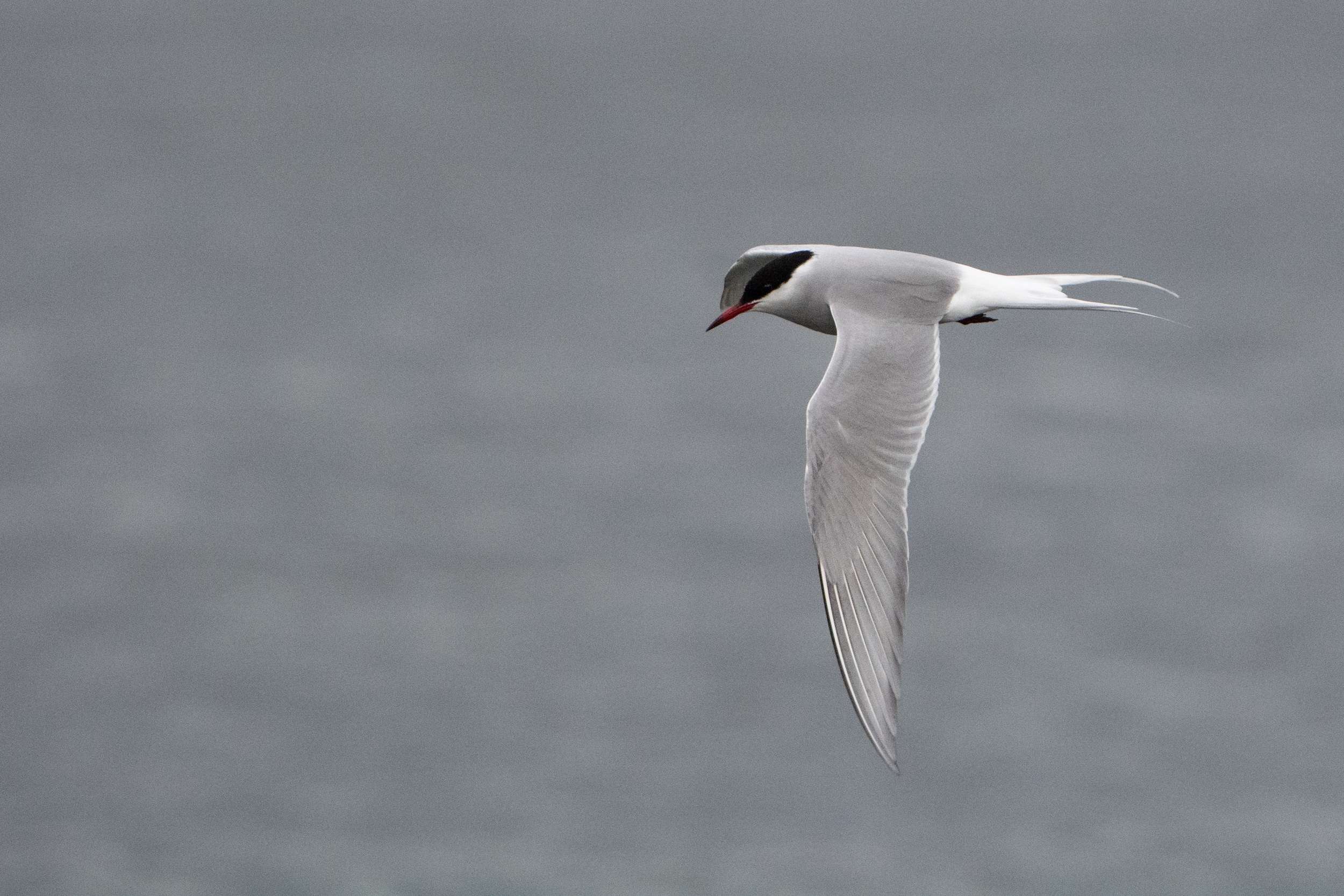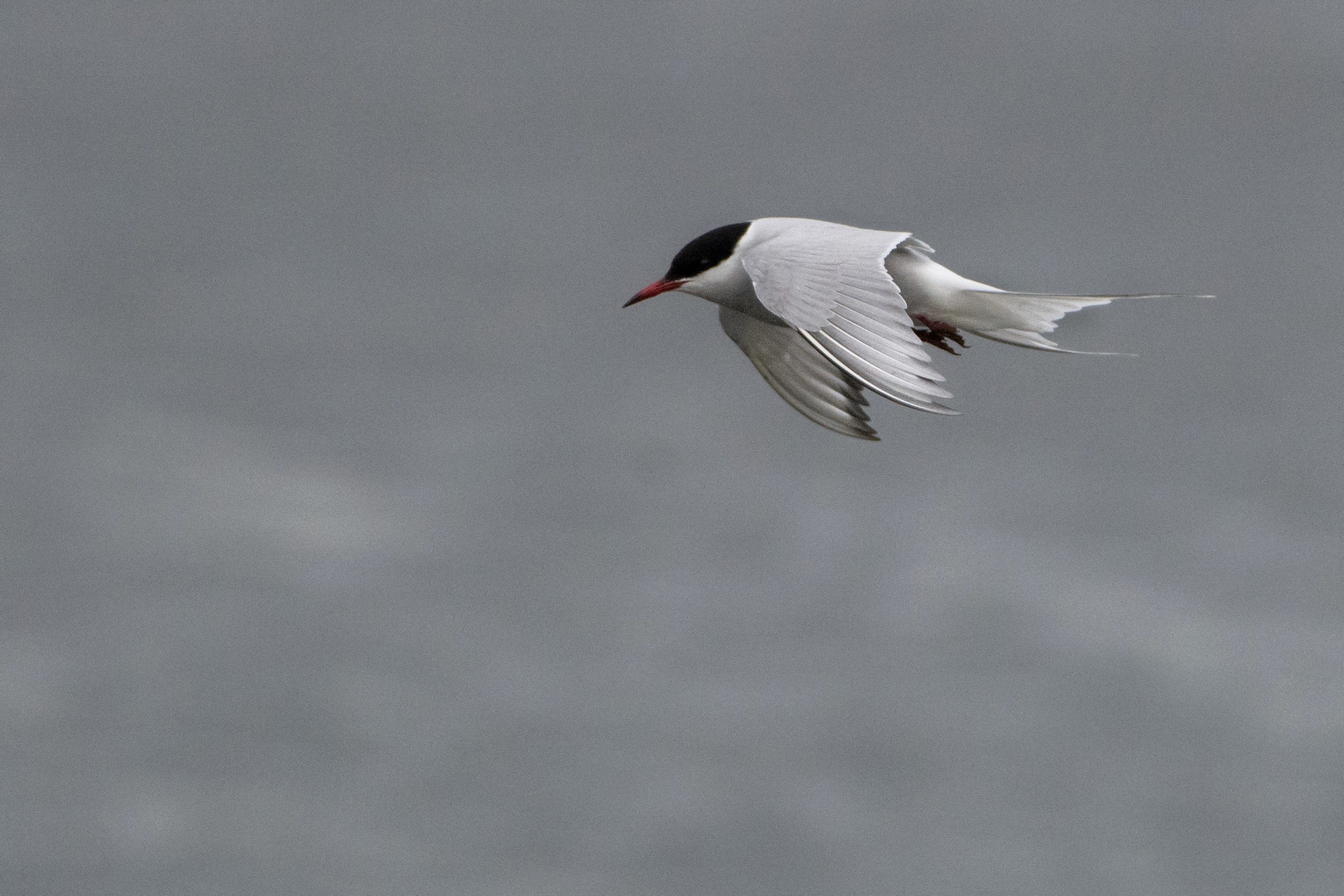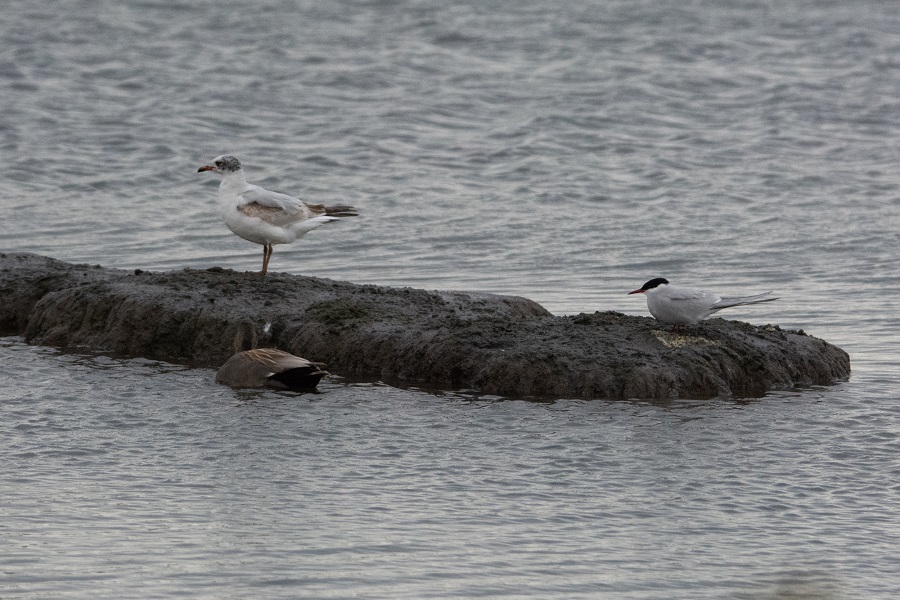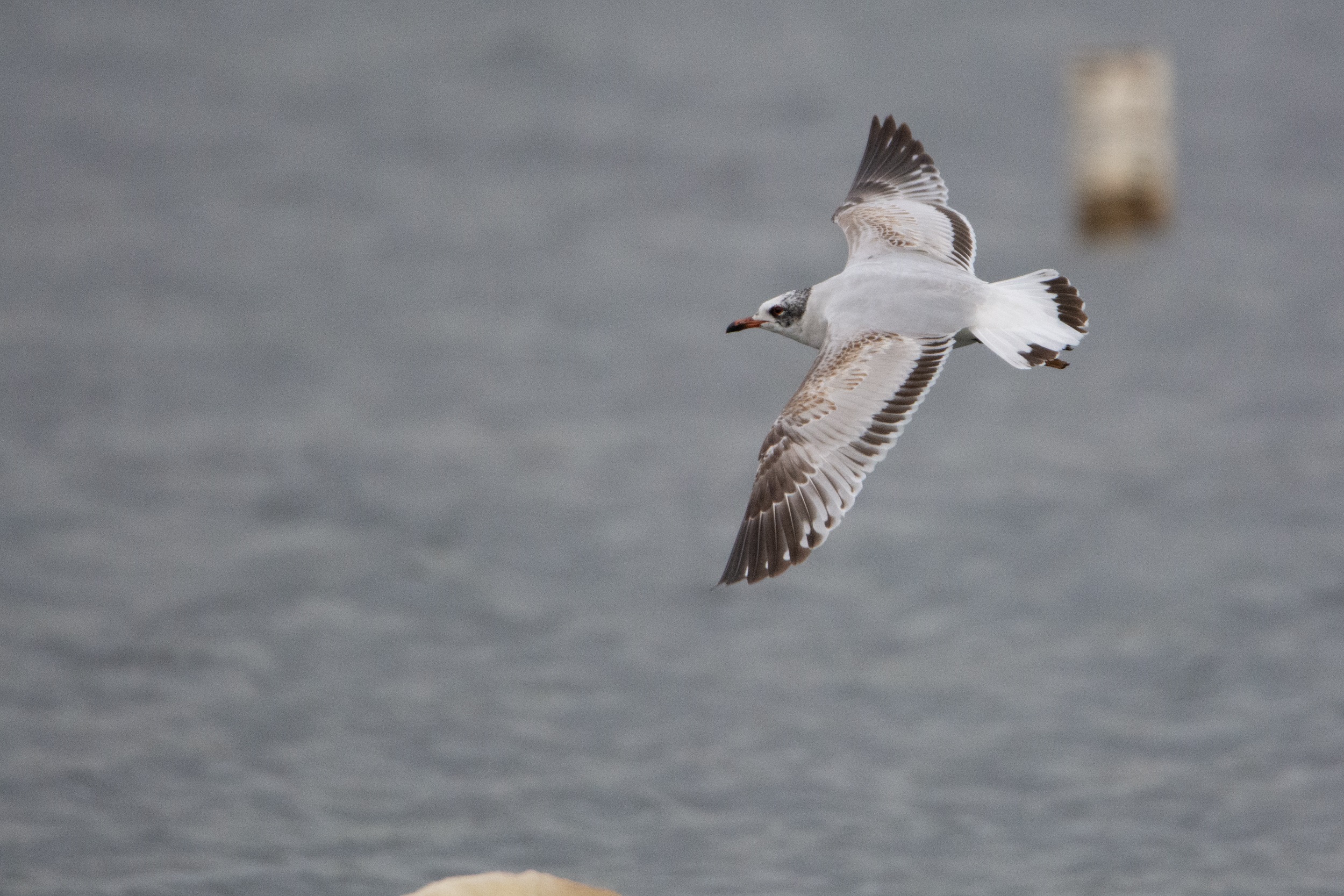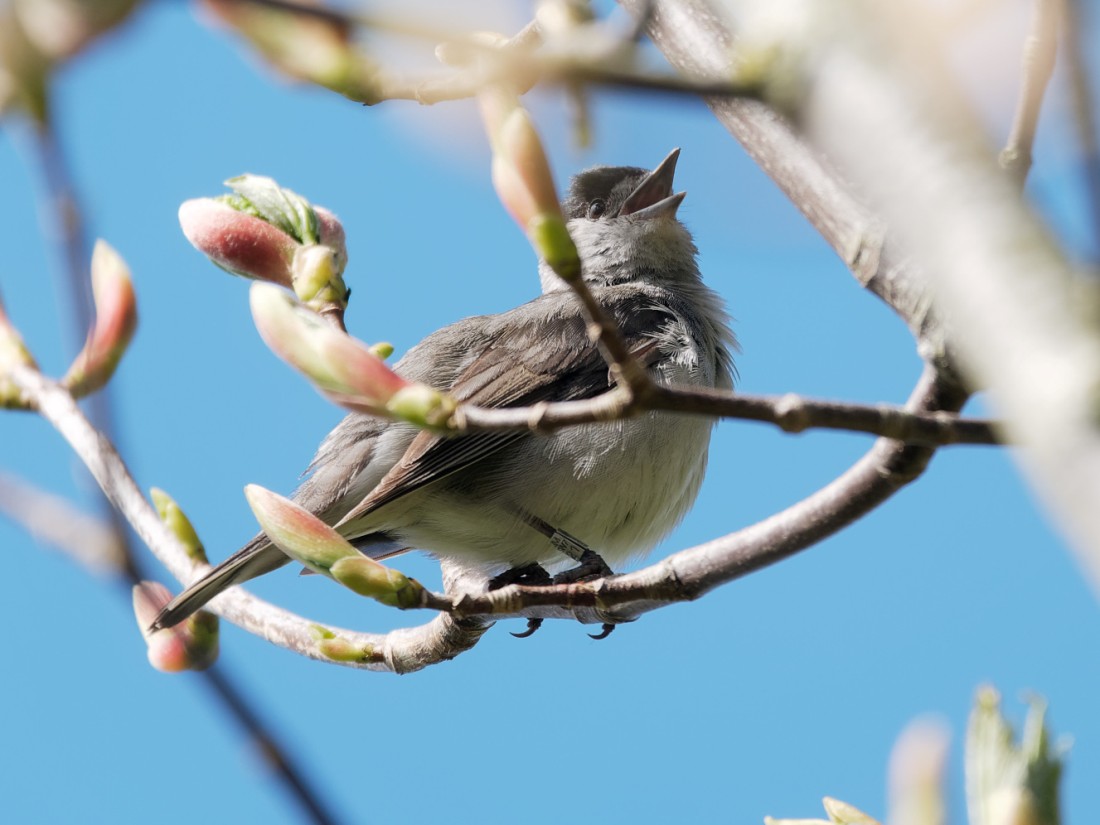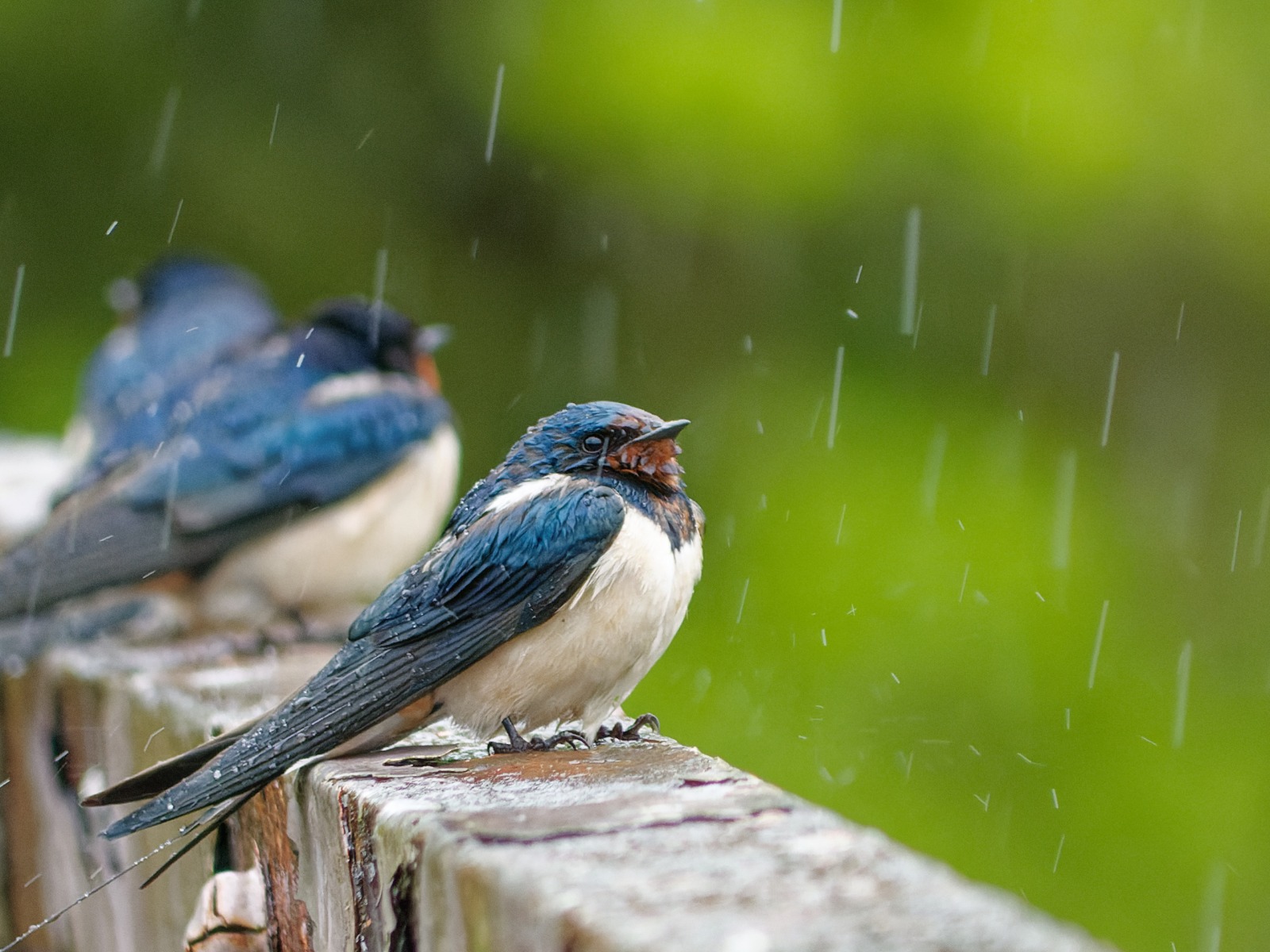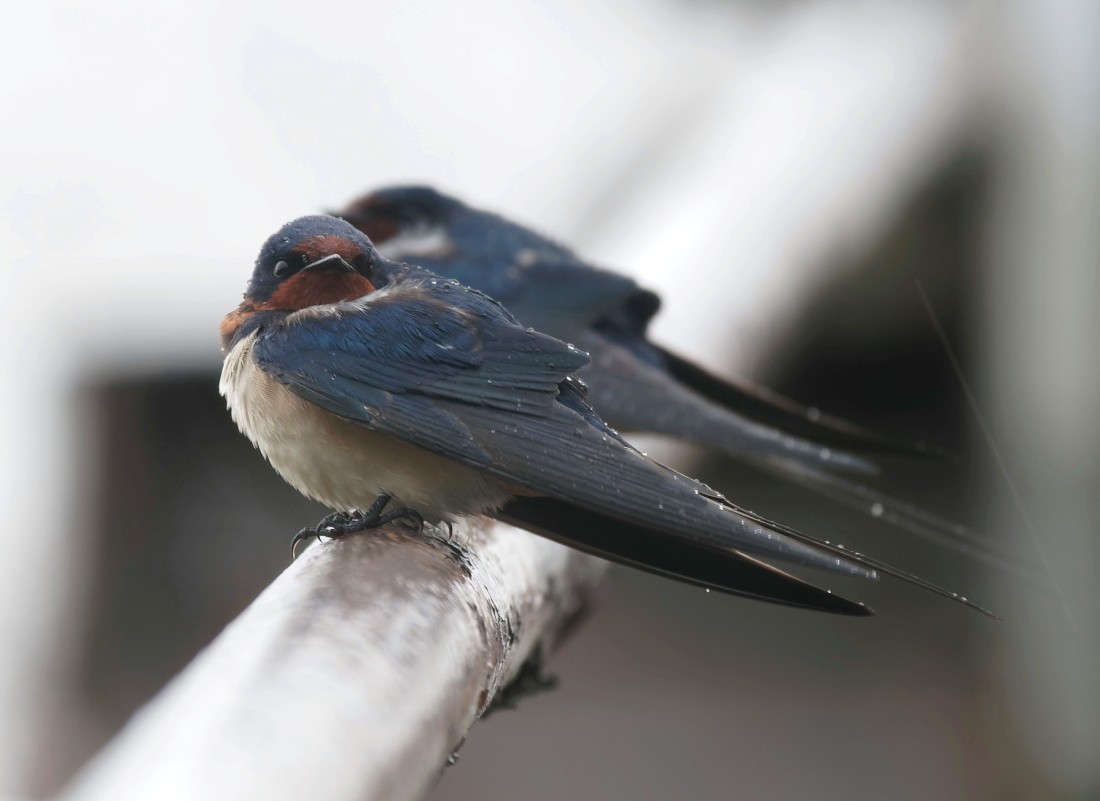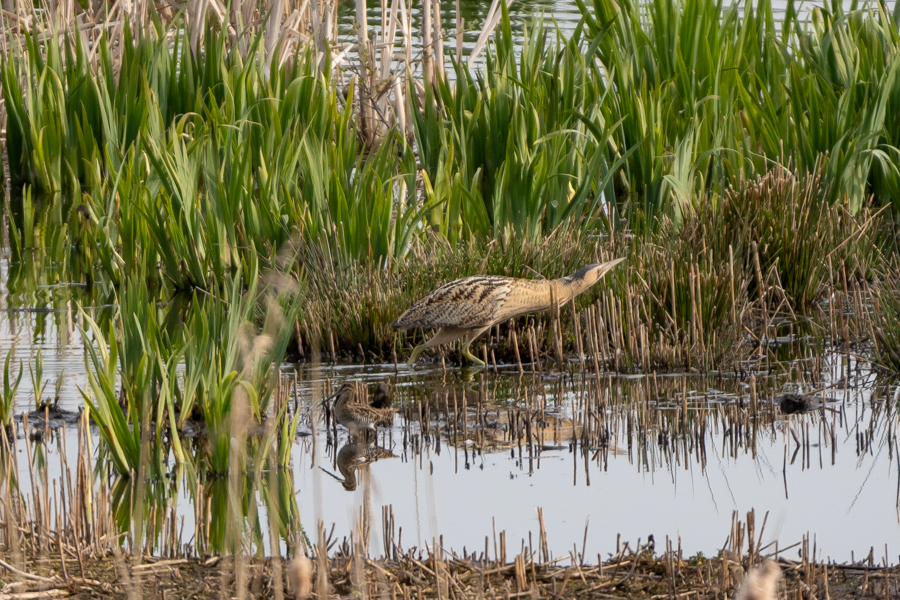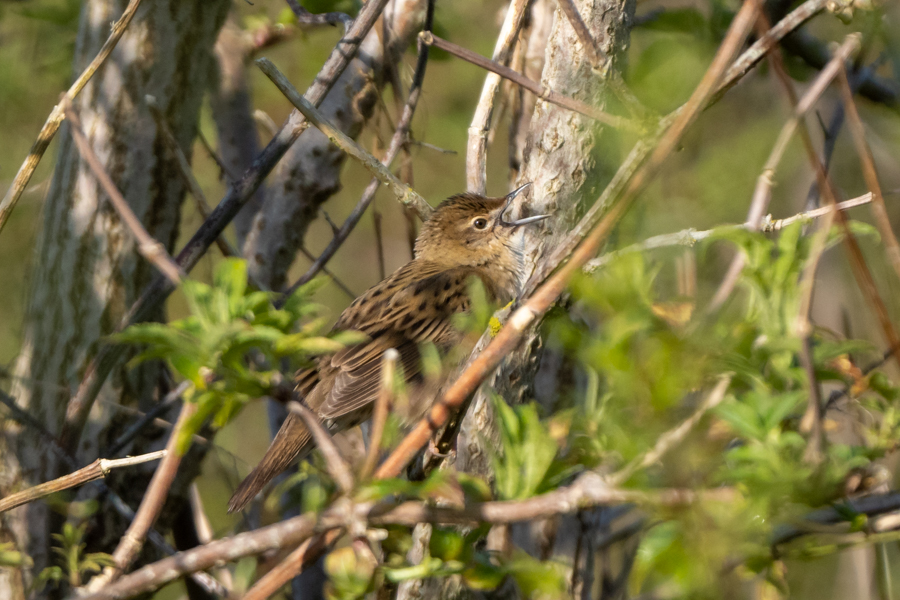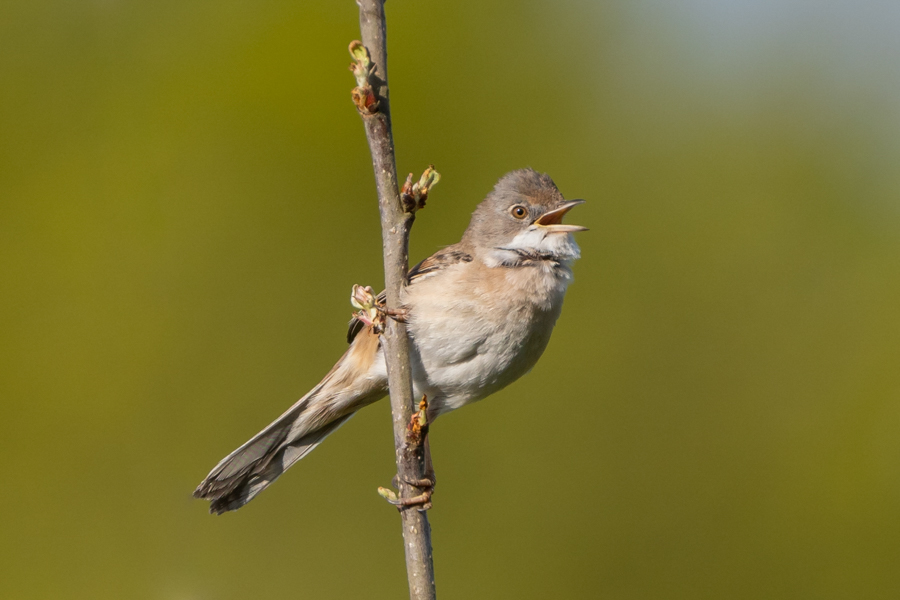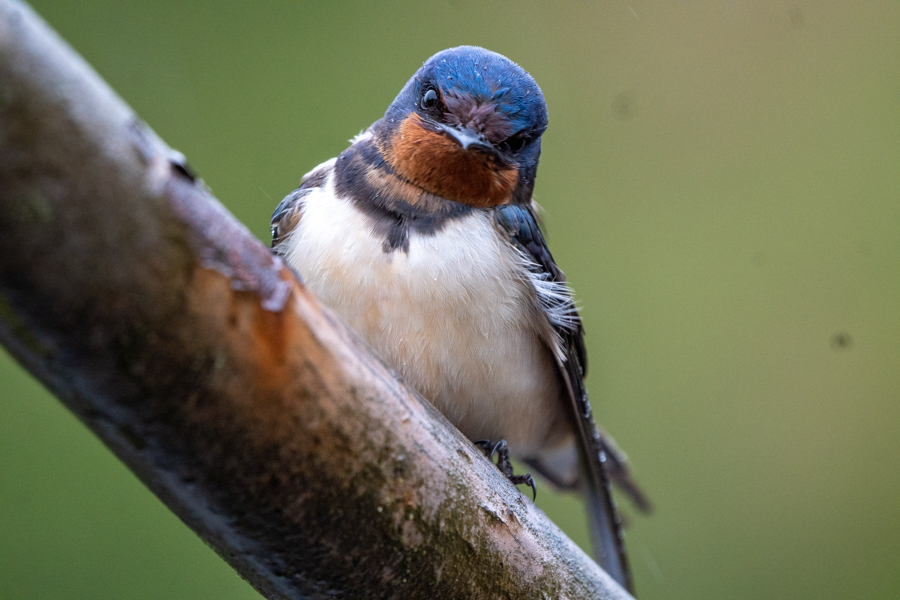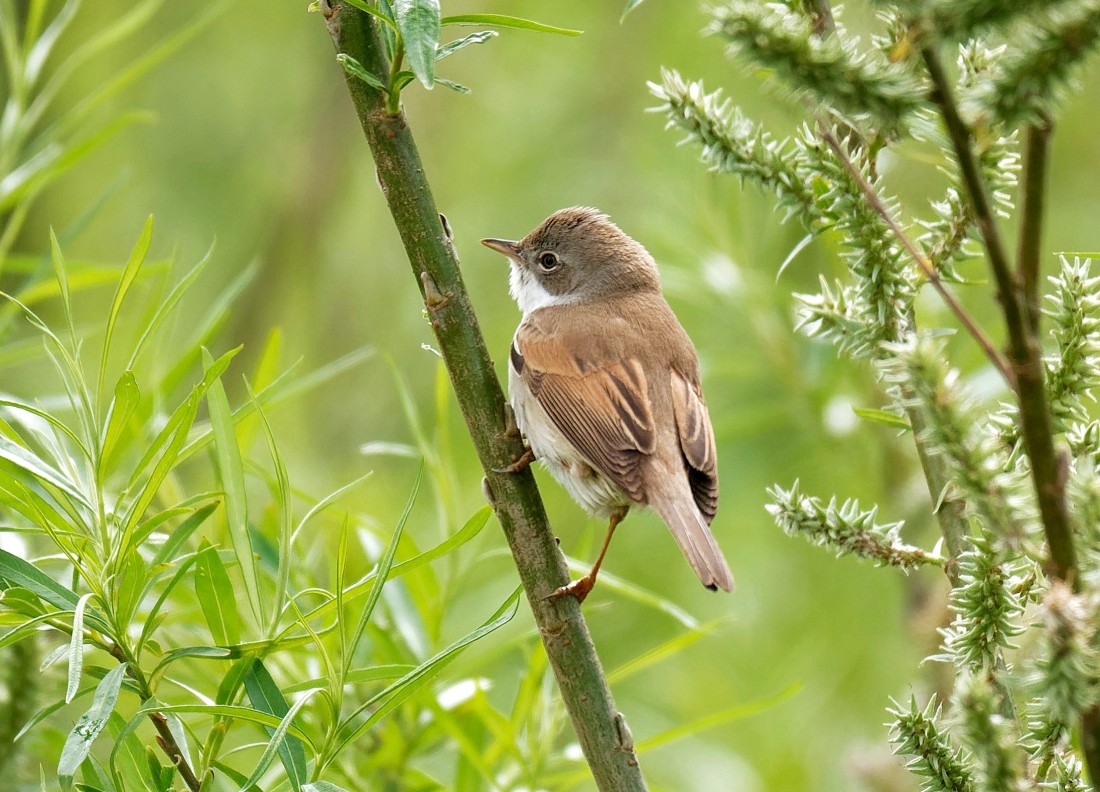Woolston Eyes Monthly Sightings
2021-05-29
The first warmish day for a while, with No.4 bed highlights of singing Lesser Whitethroat and Garden Warbler and a count of 160 Gadwall. The latter is part of the summer build-up of Gadwall which, in recent years has produced counts which are of international importance. A dragonfly survey of the Western Pools on No.1 bed produced the best dragonfly count of the year so far, with: 8 newly emerged Broad-bodied Chasers, 1 Common Darter, 44 Blue-tailed Damselflies and 32 Azure Damselflies. Photo of a recently emerged Broad-bodied Chaser Cheers David
Submitted by: David Bowman
2021-05-26
Here a photo of Black-necked Grebes with young. Taken by JIM WILLIAMS on Friday evening 21st May from the Frank Linley Hide.
Submitted by: Lesj
2021-05-23
https://youtu.be/NPuIzUu9pCQ Also a photo of one of the adult grebes. Cheers David
Submitted by: David Bowman
2021-05-22
The past week has brought some nice variety and today was no different. Following Wood Sandpiper, possible Temminck’s Stint, Little Gulls and Avocet, it was pleasing to catch up with a Spotted Flycatcher, hawking for insects by the No.3 bed Footbridge. This long distance migrant is one of the last birds to return to the UK breeding grounds and has suffered a massive decline over the past thirty years. They hawk for flying insects and the rapid decline in large flying insects in the UK has probably been a factor in their disappearance from many Cheshire breeding sites. We don’t see them every year, now, so spent a bit of time enjoying its presence. On a more optimistic note, the eight broods of Black-necked Grebes on No.3 bed is excellent for this time of year, with, hopefully, more to come. One adult was happily feeding a half-grown young right in front of the South Screen and you couldn’t wish for better views. Photo of a Black-necked Grebe feeding a chick. Cheers David Bowman (with Helen Wynn, Sue Haddock and Brian Baird)
Submitted by: David Bowman
2021-05-20
During the sunny intervals yesterday afternoon a couple of Broad-bodied Chaser dragonflies and four damselfly species were present at the pools on No.1 bed.
Photo of a female Broad-bodied Chaser.
Submitted by: Brian Baird
2021-05-19
A nice morning at Woolston Eyes, showing our new Assistant Warden, Lizzy Hill, around the Reserve. As spring slowly transits into summer, our focus shifts from looking out for migrants to counting broods of water-birds and doing surveys of singing birds, butterflies and dragonflies. Bird sightings included passing Redshank and Raven plus a pair of Mediterranean Gulls. As for the butterflies, a Brimstone was noted alongside a few Orange-tips and plenty of Small Tortoiseshells and Green-veined Whites, though very few dragonflies have yet emerged. Photo of an Orange Tip Cheers David Bowman
Submitted by: David Bowman
2021-05-17
Dramatic weather was a feature of the morning, with pleasant sunshine early on before the temperature plummeted and a violent thunderstorm brought torrential rain and hailstones. With scores of Swifts and hirundines feeding low over No.3 bed it was no surprise to see a hunting Hobby come dashing through. Then the bird of the morning, an Avocet, dropped in briefly before heading towards No.4 bed, where it was later relocated. Avocets are scarce migrants to the Reserve but they do breed at Frodsham and we hope that the new wetland on No.4 bed will tempt them to stay and breed in the near future. Finally, a nice second calendar year Marsh Harrier arrived and was actively hunting, much to the consternation of the breeding Black-headed Gulls. Record shot of the Avocet Cheers David Bowman (with David Spencer)
Submitted by: David Bowman
2021-05-16
Here’s a link to a brief video from the last few days. It shows: a singing Reed Warbler, a brood of Pochard, a Black-necked Grebe, a distant Little Gull and a Wood Sandpiper.
To watch David’s video CLICK HERE…. or copy the link below into your browser
https://youtu.be/CNyULEmytQI Cheers David
Submitted by: David Bowman
2021-05-15
As it was fairly quiet on No.3 bed early on, we went on to No.1 bed to check on progress with some of our scarcer breeding species. Pleasingly, the Peregrines look to be doing OK and we’d hope to be able to see the young within the next week or so. Later, back on No.3 bed, a 2nd calendar year Little Gull appeared, rested for a short while before continuing its eastward journey. Then a Hobby appeared among the scores of feeding Swifts and hirundines before the bird of the day appeared, a brownish ‘Stint’ (a tiny, sparrow-sized wader) flew in from the west and looked to be landing before veering back towards No.4 bed. It was possibly a Temminck’s Stint, from the general colouration but we weren’t able to see the confirming features in flight. A mad dash to No.4 bed failed to re-find it, though a couple of Dunlin and a Redshank were some reward. Photo of a Black-necked Grebe Cheers David
Submitted by: David Bowman
2021-05-13
An early morning breeding bird survey of No.4 bed at Woolston Eyes produced a nice surprise, with our first Wood Sandpiper of the year feeding and bathing on the new wetland alongside a Common Sandpiper and a single Snipe. These elegant small waders are scarce passage visitors to the Reserve. They winter in Africa and mainly breed in sub-arctic Europe, though there is a small breeding population in the Scottish Highlands. Eventually returning to our survey, the richness of the habitat around the margins of the developing wetland can be judged from from the number of birds in song, with counts of singing males including: 6 Garden Warblers, 3 Sedge Warblers, 17 Reed Warblers, 1 Cetti’s Warbler, 17 Willow Warblers, 20 Chiffchaffs, 69 Blackcaps, 30 Whitethroats, 56 Robins, 42 Wrens, 14 Blackbirds, 14 Dunnocks, 8 Song Thrushes, 3 Reed Buntings, 5 Greenfinches, 1 Linnet, 1 Willow Tit and 1 Goldfinch. Finally. back on No.3 bed for a drink and a rest, 5 broods of Black-necked Grebes, 3 broods of Pochard and a male Marsh Harrier were the undoubted highlights. Record shot of the Wood Sandpiper Cheers David Bowman (with Daniel Owen and Dave Steel)
Submitted by: David Bowman
2021-05-08
Dave Steel and I decided to brave the rain and look for grounded migrants on the wide open spaces of the new No.4 bed wetland. A Fox sauntered into view carrying a freshly killed adult Canada Goose and we then heard Yellow Wagtail calling and managed to track down 9 feeding in weedy cover, which is the highest ever count for the Reserve. Along the margins of the flooded area, 2 Dunlin and 2 Common Sandpipers were feeding actively, while more wagtails were flushing and flying. Around 30 of these “alba” wagtails were feeding around the freshly dug areas and at least 2 (and possibly many more) were White Wagtails, which allowed a really close approach. Alongside the wagtails was a nice “Greenland” type male Wheatear. The White Wagtails and the Wheatear will have been en route for breeding grounds in Iceland or Greenland before being forced down by the rain. Back on No.3 bed, 2 more Yellow Wagtails and 35 Swifts rounded off a brilliant morning. Photo of a Lesser Black-backed Gull Cheers David
Submitted by: David Bowman
2021-05-07
It was a delight to see a Male Kingfisher (ringed) in front of the John Morgan Hide , preening and diving twice before being banished by a Black Headed Gull. By Hannah Kearney .
Submitted by: Chris Kearney
2021-05-07
Photo of a squall passing to the north of No.3 bed. Cheers David
Submitted by: David Bowman
2021-05-07
A brief video from the past few days, including a second-calendar year, Mediterranean Gull and an Arctic Tern on the Morgan Hide scrape.
To watch David’s video CLICK HERE… or simply copy the following link into your browser. https://youtu.be/keCjUDF3vRI Cheers David Bowman
Submitted by: David Bowman
2021-05-04
Arctic Tern showing the diagnostic underwing pattern. There is a well-defined dark trailing edge formed by the dark tips to the primary feathers, and the primary feathers are translucent.
In Common Tern the trailing edge is ill-defined and broad, and only the inner primary feathers are translucent.
Submitted by: Daniel Owen
2021-05-04
Arctic Tern showing a nice plain grey upperwing, whereas Common Tern would typically show darker outer primaries.
The bird also lacks the white lower eyering a Common Tern would show
Submitted by: Daniel Owen
2021-05-06
The weather treated us well this morning, with blue skies and scudding clouds, while the squalls which came in from the north-west passed us by. We covered both No.3 bed and the new No.4 bed and highlights were: a couple of Common Sandpipers, a hunting Hobby, a late Jack Snipe, a reeling Grasshopper Warbler and a passage of aerial feeders which, by the end of the morning, totalled: 140 Swifts, 120 House Martins, 90 Swallows and 30 Sand Martins. Photo of a Blackcap Cheers David
Submitted by: David Bowman
2021-05-03
It was a welcome surprise to stumble upon six rain-drenched Swallows on the No.3 bed footbridge taking a break from their elegant skimming across the water catching insects .
Submitted by: Chris Kearney
2021-05-04
Adverse weather in spring always brings the promise of something different, as migrants are forced down by headwinds and the threat of rain. Daniel Owen and I arrived on No.3 bed, not long after dawn, to find rain-drenched Swallows perched on the Footbridge. Arriving in the Morgan Hide, in blustery north-westerlies, we were greeted by an elegant Arctic Tern out over the water. This is the species with the longest migration journey of all and it may have spent our winter as far south as Antarctica and be on its way to breeding grounds on the sub-arctic tundra. It stayed for a few hours and rested for a while on the scrape before drifting northwards. A calling Greenshank and a surprisingly silent Whimbrel then both passed through, while four sub-adult Mediterranean Gulls dropped in and stayed for a while. I then had to go over to No.4 bed for a progress meeting about the new wetland, enjoying the spectacle of scores of hirundines hawking for insects below the Footbridge as I walked off the bed. No.4 bed also produced some nice birds, with three late Jack Snipes and a Common Sandpiper the pick of the bunch. Back in the Morgan Hide for lunch, six Swifts passed over, while the surface of the water was covered with masses of low-skimming hirundines. Photo of a Swallow Cheers David Bowman
Submitted by: David Bowman
2021-05-03
Belated posting of a photo of the Bittern on No.3 bed on 18th April. Found by Al Warford and Les Jones.
Submitted by: David Spencer
2021-05-03
There were numerous hirundine’s feeding in the ox-bow this afternoon and using the footbridge to rest on in the heavy rain.
Photo of House Martin.
Submitted by: David Spencer
2021-05-01
With a light but cool northerly breeze and blue skies, conditions were perfect for another breeding bird survey of No.1 bed. Highlights were: a second singing Lesser Whitethroat, 2 Garden Warblers and 7 Reed Warblers, plus finding the resident Peregrine pair still looking settled at the nest site, as they should have small young in the nest by now. It was also good to see 2 pairs of Swallows and a pair of Pied Wagtails building nests, as they are uncommon breeders on the Reserve. Back on No.3 bed there had been a noticeable arrival of warblers, with 4 Grasshopper Warblers, 10 Sedge Warblers and 8 Reed Warblers the pick of the bunch. Although 70 Swallows and smaller numbers of Sand Martins and House Martins were feeding low over the water, no Swifts came over, for the first time this week, though a Hobby did put in an appearance. Photo of a Whitethroat Cheers David Bowman
Submitted by: David Bowman

